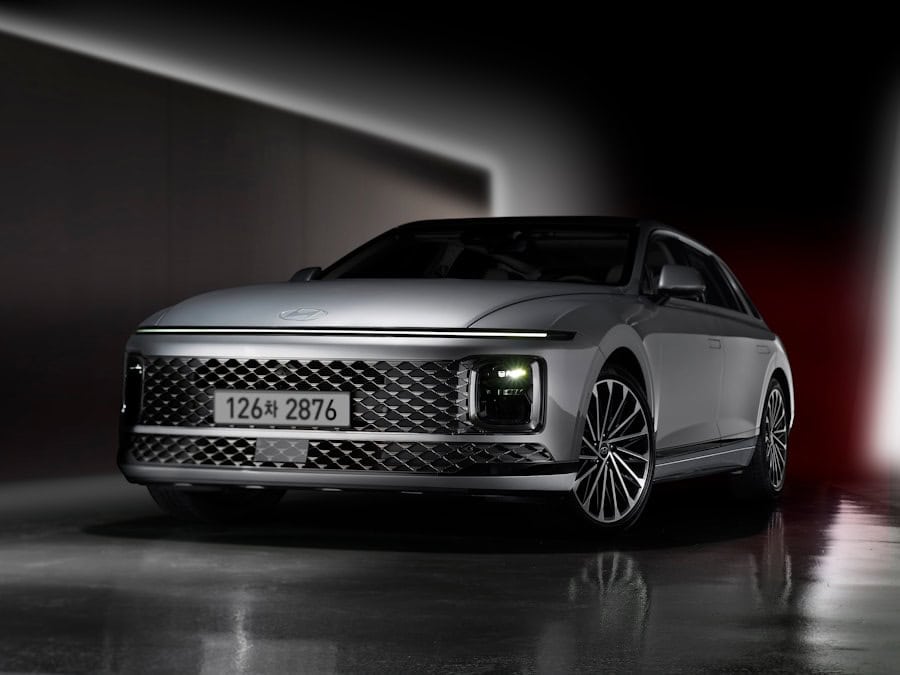The automotive industry is undergoing a significant transformation, with hydrogen-powered vehicles emerging as a promising alternative to traditional gasoline and electric vehicles. The rise of hydrogen fuel cell technology can be traced back to the growing concerns over climate change, air pollution, and the depletion of fossil fuels. As governments and consumers alike seek cleaner, more sustainable transportation options, hydrogen vehicles have gained traction as a viable solution.
Major automotive manufacturers, including Toyota, Honda, and Hyundai, have invested heavily in hydrogen technology, producing models like the Toyota Mirai and the Hyundai NEXO. These vehicles utilize hydrogen fuel cells to convert hydrogen gas into electricity, powering electric motors and producing only water vapor as a byproduct. The increasing interest in hydrogen-powered vehicles is also fueled by advancements in fuel cell technology and a growing awareness of the limitations of battery electric vehicles (BEVs).
While BEVs have made significant strides in recent years, challenges such as limited range, long charging times, and the environmental impact of battery production remain pressing issues. Hydrogen fuel cells offer a compelling alternative, providing longer driving ranges and faster refueling times. As a result, hydrogen-powered vehicles are being positioned as a key player in the future of sustainable transportation, particularly for applications requiring longer distances or heavier payloads, such as commercial trucking and public transportation.
Key Takeaways
- Hydrogen-powered vehicles are gaining popularity as an alternative to traditional gasoline-powered cars.
- Advantages of hydrogen fuel cells include zero emissions, fast refueling, and long driving range.
- Challenges and limitations of hydrogen-powered vehicles include high production costs and limited infrastructure for refueling stations.
- The development of infrastructure for hydrogen fueling stations is crucial for the widespread adoption of hydrogen-powered vehicles.
- Government support and investment in hydrogen technology is essential for the growth of the hydrogen-powered vehicle industry.
Advantages of Hydrogen Fuel Cells
Efficiency and Environmental Benefits
One of the most significant benefits of hydrogen fuel cells is their high efficiency. They convert chemical energy directly into electrical energy through an electrochemical reaction, achieving efficiencies of up to 60%. In contrast, internal combustion engines typically operate at around 20% efficiency. This higher efficiency translates into better energy utilization and reduced fuel consumption, making hydrogen vehicles an environmentally friendly choice.
Rapid Refueling Capability
Another notable advantage of hydrogen-powered vehicles is their rapid refueling capability. Refueling a hydrogen vehicle takes approximately five minutes, similar to the time it takes to fill a conventional gasoline tank. This is in stark contrast to battery electric vehicles, which can take anywhere from 30 minutes to several hours to recharge, depending on the charging infrastructure.
Zero Emissions and Convenience
Furthermore, hydrogen fuel cells produce zero tailpipe emissions, contributing to improved air quality and reduced greenhouse gas emissions. The convenience of quick refueling, combined with the environmental benefits, makes hydrogen vehicles particularly appealing for consumers who may be hesitant to adopt electric vehicles due to range anxiety or long charging times.
Challenges and Limitations of Hydrogen-Powered Vehicles

Despite their advantages, hydrogen-powered vehicles face several challenges that hinder widespread adoption. One of the primary obstacles is the high cost of hydrogen production and fuel cell technology. Currently, most hydrogen is produced through natural gas reforming, a process that emits carbon dioxide and undermines the environmental benefits of hydrogen as a clean fuel source.
While electrolysis—splitting water into hydrogen and oxygen using electricity—offers a cleaner alternative, it remains expensive and energy-intensive. As a result, the overall cost of hydrogen fuel cells remains higher than that of traditional internal combustion engines or battery electric vehicles. Another significant challenge is the limited availability of hydrogen fueling infrastructure.
While some regions have made strides in establishing hydrogen stations, the network remains sparse compared to the extensive charging infrastructure for electric vehicles. This lack of infrastructure creates barriers for potential consumers who may be reluctant to invest in hydrogen vehicles without assurance of convenient refueling options. Additionally, the logistics of transporting and storing hydrogen present safety concerns due to its flammability and low density.
Addressing these challenges will be crucial for the successful integration of hydrogen-powered vehicles into the mainstream automotive market.
Infrastructure for Hydrogen Fueling Stations
The development of a robust infrastructure for hydrogen fueling stations is essential for the widespread adoption of hydrogen-powered vehicles. Currently, the number of hydrogen stations is limited, primarily concentrated in specific regions such as California in the United States and parts of Europe and Japan. This uneven distribution poses a significant challenge for consumers who may be interested in purchasing hydrogen vehicles but are deterred by concerns over refueling availability.
To address this issue, both public and private sectors must collaborate to expand the network of hydrogen fueling stations. Governments can play a pivotal role by providing incentives for the construction of new stations and integrating hydrogen infrastructure into urban planning initiatives. For instance, countries like Germany have implemented national strategies to increase the number of hydrogen stations significantly by 2030.
Private companies are also stepping up efforts to develop fueling infrastructure; partnerships between automakers and energy companies can facilitate the establishment of new stations in strategic locations. Moreover, innovative solutions such as mobile refueling units or on-site hydrogen production at fueling stations could help alleviate some logistical challenges associated with hydrogen distribution. By investing in research and development to improve production methods and reduce costs, stakeholders can create a more accessible and efficient fueling network that encourages consumer adoption.
Government Support and Investment in Hydrogen Technology
Government support plays a crucial role in advancing hydrogen technology and promoting its adoption in the transportation sector. Many countries have recognized the potential of hydrogen as a clean energy source and have implemented policies aimed at fostering research, development, and deployment of hydrogen technologies. For example, Japan has established a comprehensive national strategy that includes funding for research projects, subsidies for consumers purchasing hydrogen vehicles, and investments in infrastructure development.
In Europe, the European Union has set ambitious targets for reducing greenhouse gas emissions and transitioning to renewable energy sources. The EU’s Hydrogen Strategy outlines plans to scale up production and use of green hydrogen across various sectors, including transportation. This strategy includes funding initiatives aimed at supporting research and innovation in hydrogen technologies while also promoting collaboration between member states to create a cohesive approach to hydrogen infrastructure development.
In addition to direct funding and policy support, governments are also fostering public-private partnerships that leverage private sector expertise and investment in hydrogen technology. By creating an environment conducive to innovation and collaboration, governments can accelerate the development of hydrogen-powered vehicles and their supporting infrastructure.
The Role of Hydrogen-Powered Vehicles in Reducing Carbon Emissions

Environmental Benefits of Hydrogen Fuel Cells
The integration of hydrogen-powered vehicles into public transportation systems can further amplify their positive environmental effects. Buses and trucks are often responsible for a disproportionate share of urban air pollution due to their reliance on diesel fuel. By transitioning these fleets to hydrogen fuel cell technology, cities can significantly reduce local emissions while improving air quality for residents.
Piloting Hydrogen Buses in Public Transport Systems
Several cities around the world are already piloting hydrogen buses as part of their public transport systems, demonstrating the feasibility and benefits of this transition. Moreover, as renewable energy sources become more prevalent in electricity generation, the potential for producing green hydrogen increases. By utilizing excess renewable energy during peak production times—such as solar power during sunny days—hydrogen can be produced sustainably and stored for later use in fuel cells.
Decarbonizing the Transportation Sector
This not only helps balance energy supply and demand but also contributes to decarbonizing the transportation sector.
Innovations and Developments in Hydrogen Fuel Cell Technology
The field of hydrogen fuel cell technology is rapidly evolving, with ongoing innovations aimed at improving efficiency, reducing costs, and enhancing performance.
For instance, advancements in membrane technology have led to the development of proton exchange membranes (PEMs) that offer improved conductivity and durability.
Additionally, efforts are being made to enhance the overall design of fuel cells to optimize their performance in real-world applications. Innovations such as modular fuel cell systems allow for greater flexibility in vehicle design while enabling manufacturers to scale production more efficiently. These modular systems can be tailored to meet specific power requirements for different vehicle types—from passenger cars to heavy-duty trucks—making them versatile solutions for various transportation needs.
Furthermore, researchers are investigating alternative methods for producing hydrogen that could lower costs and improve sustainability. For example, biohydrogen production through microbial processes is gaining attention as a potential method for generating clean hydrogen from organic waste materials. This approach not only provides a renewable source of energy but also addresses waste management challenges.
The Potential Future of Hydrogen-Powered Vehicles in the Green Tech Industry
As global efforts intensify to combat climate change and transition toward sustainable energy solutions, hydrogen-powered vehicles are poised to play an increasingly prominent role within the green tech industry. The convergence of technological advancements, government support, and growing consumer awareness creates an environment ripe for innovation in this sector.
Moreover, as industries beyond transportation begin exploring hydrogen applications—such as shipping, aviation, and industrial processes—the demand for hydrogen as an energy carrier will likely increase significantly. This expanded demand could lead to further investments in production infrastructure and research initiatives aimed at developing sustainable methods for generating green hydrogen. In conclusion, while challenges remain in terms of cost and infrastructure development, the future prospects for hydrogen-powered vehicles appear promising within the broader context of green technology advancements.
As stakeholders across various sectors collaborate to overcome these hurdles, it is conceivable that hydrogen will emerge as a cornerstone of sustainable transportation solutions in the coming decades.
In a recent article on ENICOMP, the future of hydrogen-powered vehicles in green tech was explored in depth. The potential for these vehicles to revolutionize the transportation industry and reduce carbon emissions is truly exciting. For more information on cutting-edge technology, check out their article on Smartsender: Your Chatbot Platform for Seamless Customer Interactions.
FAQs
What are hydrogen-powered vehicles?
Hydrogen-powered vehicles are vehicles that use hydrogen as a fuel source to power an electric motor. These vehicles produce zero emissions, as the only byproduct of the chemical reaction between hydrogen and oxygen is water vapor.
How do hydrogen-powered vehicles work?
Hydrogen-powered vehicles use a fuel cell to convert hydrogen gas into electricity, which then powers the vehicle’s electric motor. The fuel cell combines hydrogen with oxygen from the air to produce electricity, with water vapor as the only byproduct.
What are the advantages of hydrogen-powered vehicles?
Hydrogen-powered vehicles offer several advantages, including zero emissions, fast refueling times, and long driving ranges. They also provide a way to store and transport renewable energy, as hydrogen can be produced from water using renewable energy sources.
What is the current state of hydrogen-powered vehicles in the green tech industry?
Hydrogen-powered vehicles are still in the early stages of development and adoption in the green tech industry. However, there is growing interest and investment in hydrogen fuel cell technology, with several automakers and governments supporting the development of hydrogen infrastructure.
What are the challenges facing the widespread adoption of hydrogen-powered vehicles?
Challenges facing the widespread adoption of hydrogen-powered vehicles include the high cost of fuel cell technology, the limited availability of hydrogen refueling stations, and the energy-intensive process of producing hydrogen. However, ongoing research and development efforts aim to address these challenges and make hydrogen-powered vehicles more viable in the future.

